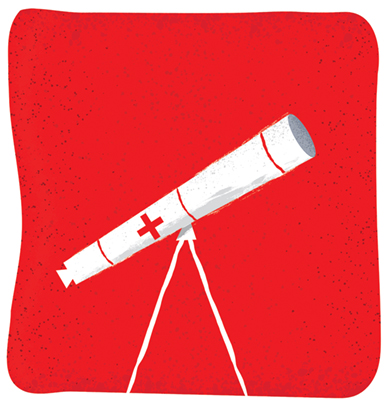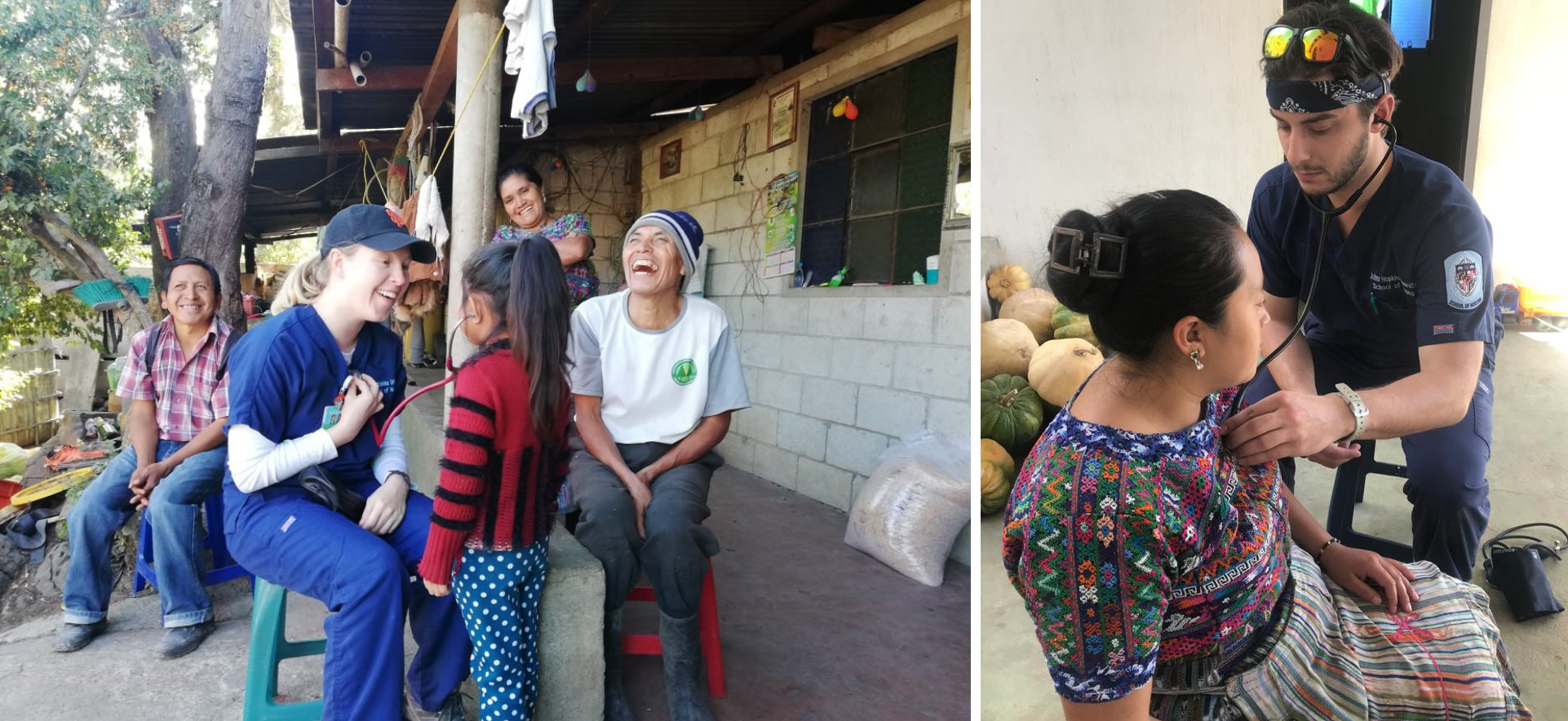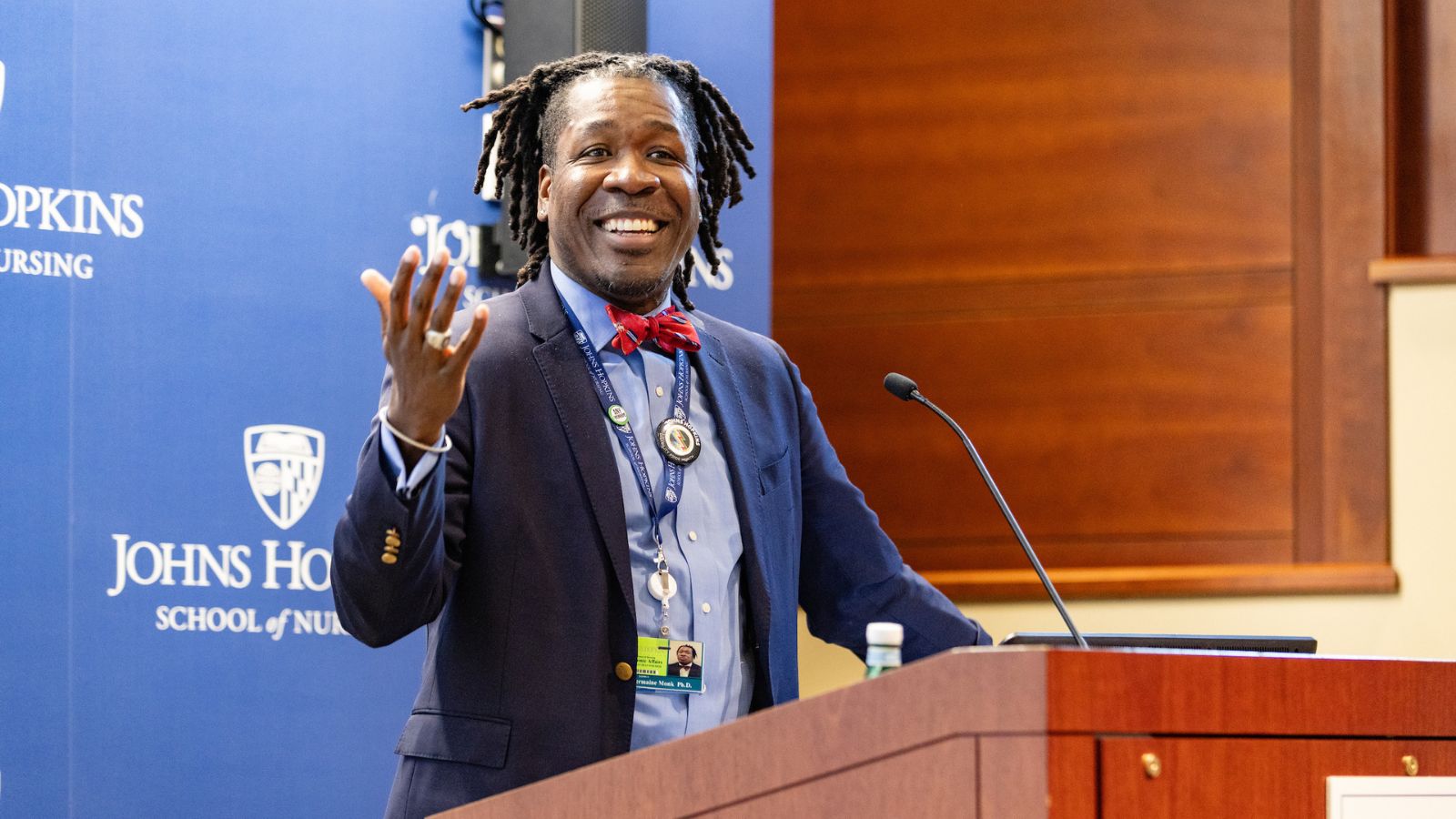Illustration by Andrew Bannecker
Increasingly, fellow researchers and funders endorse or even insist on nurses’ presence from discovery to implementation
In hospitals across the country, venous thromboembolisms (VTEs) pose a significant health risk, affecting more than 600,000 patients a year—despite effective prevention strategies such as blood thinners and compression stockings widely available to prevent these deadly clots.
Why do preventive treatments go unused? At The Johns Hopkins Hospital, Deb Hobson, RN, is part of a research team that is pushing to find out. “I learned that 12 to 14 percent of our patients weren’t receiving the doses of heparin or other blood thinners that their doctors had ordered for them,” says Hobson. “As a nurse. I thought to myself, ‘Wow, that’s a lot!’ ”
With funding from the Patient Centered Outcomes Research Institute (PCORI), Hobson and nurse educator Dauryne Shaffer, MSN, RN, are developing training sessions for nurses aimed at ensuring more patients receive VTE-preventing medications. Their involvement is crucial to the overall success of the three-year VTE prevention project, notes principal investigator Elliott Haut, MD, PhD, a Johns Hopkins trauma surgeon.
“Without a multidisciplinary team, there’s no way you’re going to get buy-in from front line providers,” says Haut. “We all want to hear from our peers. Surgeons like to listen to surgeons. Nurses like to listen to nurses. When it comes to teaching and educating and giving advice, nurses want someone like them.”

Illustration by Andrew Bannecker
Haut, who is also an associate professor of health policy and management at Johns Hopkins, says that over the past decade, he’s seen nurses become increasingly valued members of multidisciplinary research teams. “Science without collaboration doesn’t work,” he says bluntly. “If you try to do any [research] work in quality and patient safety without nurses having a voice, you’re dead in the water.”
Haut’s assessment appears to be shared by today’s grant funding organizations, from the National Institutes of Health, to PCORI, to the National Institute of Nursing Research. Increasingly these
agencies apportion their sought-after dollars to projects that cross disciplines and demand collaboration. “Funders have recognized that involving nurses in both research and translation increases the impact of discovery,” says Patricia Davidson, PhD, MEd, RN, dean of the Hopkins School of Nursing.
That’s good news for the nursing profession, Davidson says: “Ensuring we are part of the conversation when decisions are being made about research funding is critical. Nurses are an important voice to improve health outcomes for individuals and communities.”
Nurse researcher Deborah Gross, DNSc, RN, says it was precisely the potential for rich collaboration that drew her to Johns Hopkins back in 2008. And she hasn’t been disappointed.
“What makes Johns Hopkins such a great place to be as a scientist is how open people are to collaborating across school divisions,” says Gross, the Leonard and Helen Stulman Endowed Professor in Psychiatric and Mental Health Nursing. “I started doing this from the first day I arrived, working with people from the School of Public Health and the School of Medicine. If you’re doing good work, people want to know about it and be a part of it—whether you’re a nurse or a psychiatrist or a sociologist.”
Gross’s research focuses on promoting positive parent-child relationships and preventing behavior problems in preschool children from low-income neighborhoods. During her years at Rush University College of Nursing, she and colleagues launched
the evidence-based Chicago Parent Program, which aims to strengthen parenting skills and prevent behavior problems in young children. The program is being used in early childhood programs across the country, including Head Start programs in Chicago and New York City, and Gross is now working on several fronts to investigate its effectiveness among families and in schools in urban Baltimore.
Her research teams include a developmental pediatrician, psychologists, sociologists, social workers, psychiatrists, statisticians, and an economist. “It’s wonderful working across disciplines—they share perspectives that always make me think differently as a scientist,” says Gross, who holds faculty appointments in the schools of Nursing, Public Health, and Medicine at Hopkins.
At one point, for example, a mental health clinician on her team observed that a mother participating in the Chicago Parent Program seemed to be flourishing—but observed that the mom likely wouldn’t have done so well a year earlier, since at that point she wasn’t as emotionally connected to her child. Through family treatment, the clinician had helped this mother strengthen her emotional connection to her child, though she still lacked important parenting skills.
The observation resonated with Gross and ultimately prompted her to add an additional measure to her study—a measure that evaluates the quality of parent attachment as a predictor of success in the program. “This all came out of having this conversation with another clinician,” says Gross.
Every collaborator on her team brings unique value, Gross says, and as principal investigator, she’s laser focused on keeping patients front and center.
“That’s what makes nursing research so different from a lot of other scientific research,” Gross notes. “We are clinicians at heart. We have an appreciation for the patient perspective—[which impacts] the way we frame our studies, the way we think about interventions, the way we think about what we need to be analyzing.”
DIRECT CONTACT
While today’s nurses may be more and more in demand—as both collaborators and principal investigators—on scientific research teams, historically their importance to the team hasn’t been so readily recognized, says Christopher Chute, MD, MPH, DrPh, a newly appointed Bloomberg Distinguished Professor. He joined Johns Hopkins last winter as chief health research information officer of Johns Hopkins Medicine after a 27-year career at the Mayo Clinic. A self-trained informatics expert, Chute is dedicated to “getting the data right,” to make evidence-based clinical practice and translational research possible.

Illustration by Andrew Bannecker
“I’ve always been a strong supporter of nursing engagement in characterizing what’s actually happening with patients,” Chute says. “Nurses have more direct day-to-day contact with patients than most other healthcare providers. They have a unique opportunity to contribute to what we know about patients in their activities of daily living—their sense of well-being, mood, disposition, attitude.”
From his years of experience in informatics, Chute has found again and again that these intangibles serve as “sentinel variables,” alerting healthcare providers to medical decline that might not otherwise manifest itself for weeks or months.
“And yet historically, physicians, and for that matter the entire healthcare system, has diminished attention to what were regarded as these ‘softer’ variables, even though they are powerful predictors,” he says.
That’s rapidly changing. With today’s growing emphasis on accountable care, in which keeping people healthy has become a primary goal, researchers are increasingly looking to such data for answers to better prevention strategies. And who better to capture that data than nurse researchers?
“As you track patients over time, you are getting into the realm of where nurses have been dominant,” Chute observes. “It will be increasingly important to leverage the amount of nursing research that is being done, and to integrate it into comparative effectiveness research.”
This signals a significant shift in what nurse researchers will be bringing to the table, Chute observes. In the past, nurses who were part of clinical research teams most often served as project coordinators for clinical trials, responsible for recruiting patients and gaining consents. “Now we’re starting to see nurses emerging—certainly in the informatics community but also in observational research studies—as peer investigators rather than simply nurse coordinators,” he says.
SHOW AND TELL
Twice each week, Deb Hobson and Dauryne Shaffer sit down around a conference table at The Johns Hopkins Hospital with other members of their VTE prevention team for meetings that can last up to two hours. “There’s so much going on, and everyone brings a different perspective to the group,” says Hobson. “We all feel respected.”
In their research to find out why a significant number of patients at the hospital were refusing doctor-prescribed blood thinners, the team found some surprises. Among them: Some nurses believed that as long as their patients were ambulatory, the risk of blood clots was minimal, so they counseled patients against taking the prescribed medication. In other cases, nurses would make the decision to hold off on blood-thinning doses if patients were about to undergo a procedure (such as having a feeding tube inserted) out of concern that the medication could cause excessive bleeding.
While well intentioned, both courses of action had the potential to put patients at unnecessary risk of a deadly blood clot. To set the record straight and bring floor nurses up to date on the latest evidence-based practice in VTE prevention, Shaffer worked with other members on the research team to create several e-Learning modules. In addition, the team set up a technology-based system (tied to the electronic medical record) that alerts Shaffer or another nurse educator when a patient refuses a dose of prescribed preventive treatment. When she gets paged, Shaffer makes a visit to the patient’s bedside to talk through his or her concerns. She’s found that many people

Illustration by Andrew Bannecker
don’t realize how serious a blood clot can be, or that its effects can linger for many months. “I get comments like, ‘Oh my gosh, I don’t want that to happen!’ ” she says.
Based on what it learned by surveying patients, the VTE prevention team has come up with a one-page fact sheet (available in multiple languages) that is now given to many hospitalized patients. It also produced a short video in which patients who’ve suffered blood clots share their cautionary tales.
“We still have patients who will refuse [the blood-thinning] medication,” says Shaffer. “But at least it’s an educated refusal.”
Now two years into the three-year VTE prevention project, study leader Haut says his team is on track to produce a “blueprint” for multi-tiered strategies that can be adopted by hospitals across the country. The ultimate objective: to reduce the 100,000 deaths caused annually by VTE—more than AIDS, breast cancer, and motor vehicle accidents combined.
“Without nurse representation in our group, it would have been impossible for us to work on any [of this],” says Haut. “When you’re doing quality and safety research on interventions for real patients on surgical floors, where nurses are an integral part of the care being delivered … it’s absolutely critical to have nurses on the team.”


 Forging Policy: How Can Doulas Improve Black Maternal Health?
Forging Policy: How Can Doulas Improve Black Maternal Health? Guatemala Re-visited: Rainwater Project Shows Value of Service-learning Trips
Guatemala Re-visited: Rainwater Project Shows Value of Service-learning Trips You’re Welcome
You’re Welcome Forging Policy: Associate Dean Jermaine Monk and Education After Affirmative Action
Forging Policy: Associate Dean Jermaine Monk and Education After Affirmative Action My First Teachers in Nursing School Weren’t Nurses
My First Teachers in Nursing School Weren’t Nurses






